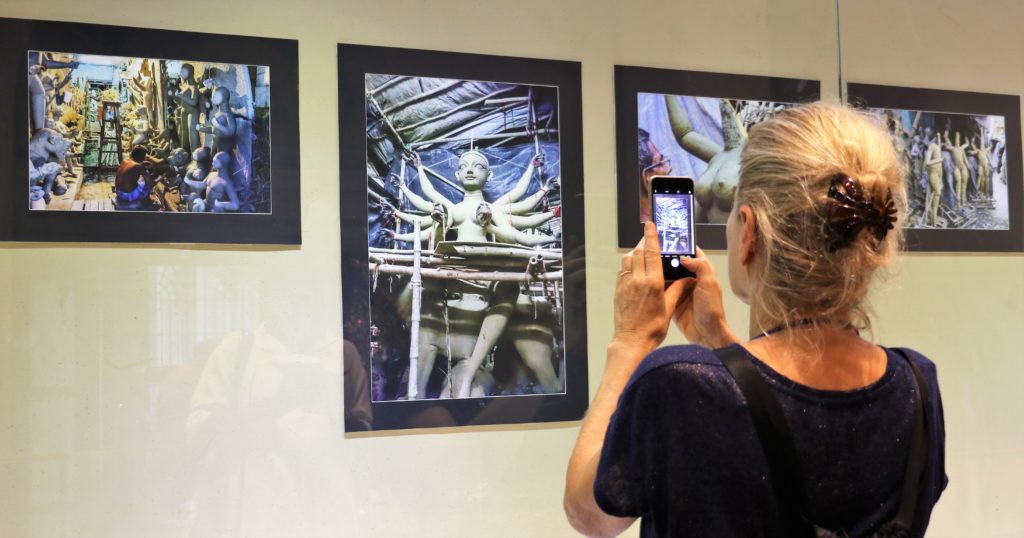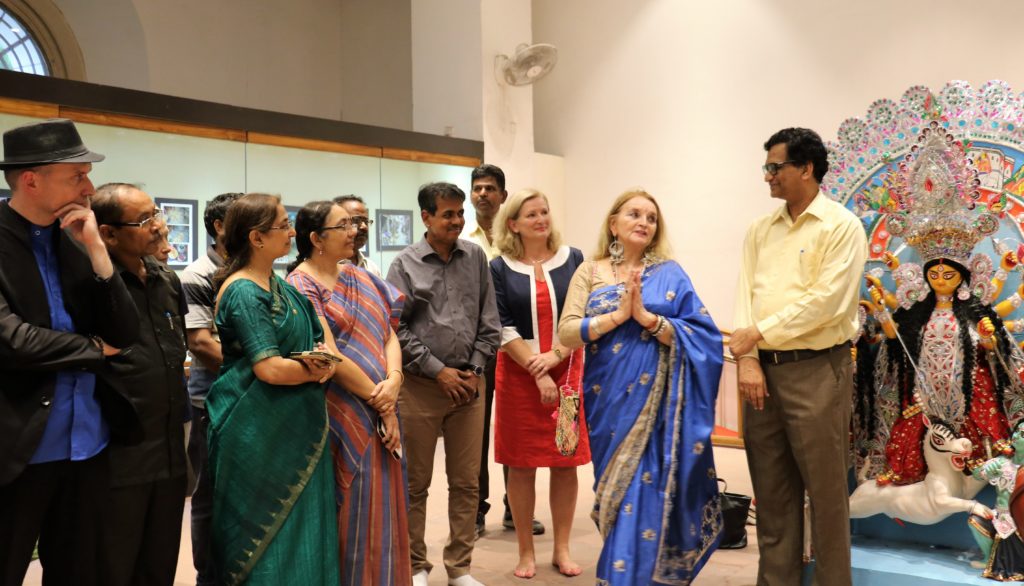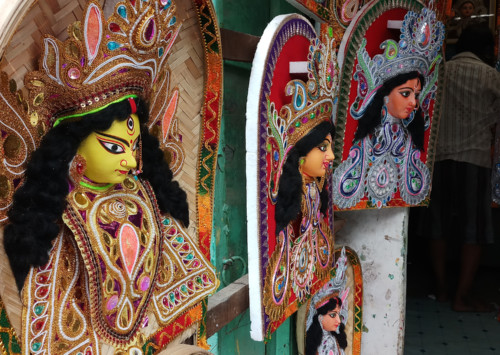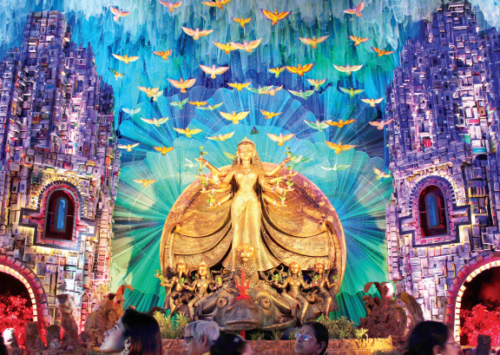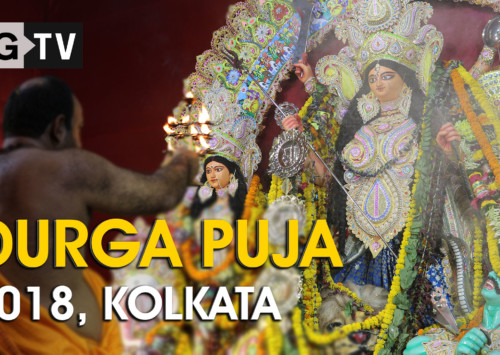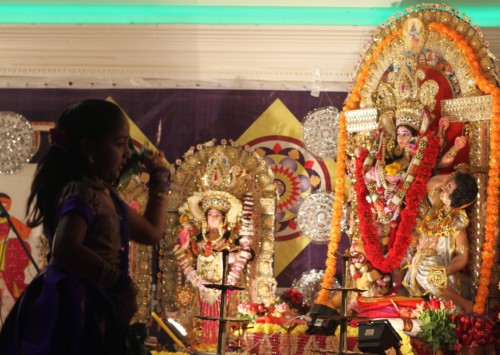A visual retreat through the eyes of a French lady

Artist Mireille-Joséphine Guézennec Himabindu at Indian Museum, Kolkata. (All photo credits: Hiya Mukherjee)
As Kolkata is known for its oldest tradition of worshipping Goddess Durga, Mireille-Joséphine Guézenne has captured various moods of Maa Durga (Mother Durga) in the city. To share and bolster her work and enthusiasm, the Indian Museum mounted a special exhibition in collaboration with the artist.
Every year with the arrival of autumn West Bengal starts preparing for its festivities. Kolkata, in particular offers glimpses of its truly unique culture and people from all around the world gather here to be a part of the Durga Puja celebrations. Mireille-Joséphine Guézenne, a French scholar who also received the initiatory name Himabindu, an Indian name, for carrying out in-depth research in sacred places of India has captured the various moods of Goddess Durga in Kolkata. In collaboration with the Indian Museum, the photographer and writer organised an exhibition titled ‘Homage to Great Goddess Durga’ that was inaugurated on October 12. The exhibition that will continue for a month till November, has conceptualised the sacred embodiment of all-powerful Shakti, her divine, aesthetic and ritual dimensions of the traditional festivity of Durga Puja in autumn.
“As a professor of philosophy, I have a lot of interest in what symbols, spirituality, rituals, and the physiological background are; hence, I tried to capture different aspects of Maa Durga, which is a huge tradition in Bengal. I started studying the texts from Puranas (of ancient times) and Sanskrit to observe the knowledge of Maa Durga, Shakti or the feminine power, hence, I chose my theme”, said the photographer to Media India Group.
The heavenly enchanted female incarnation
Durga Puja celebrates the triumph of good over the evil. This festival is meant to honour the power of female Shakti Maa Durga and her four children, Laxmi, Saraswati, Kartik and Ganesh. Her images are filmed to integrate the entire celebration from the beginning of Durga Puja which is marked by the celebration of Mahalaya to puja pandals and Visarjan (immersion). The photographs captured details of devipaksha (all the days of pujas).
Since the past four years she has been planning and has travelled extensively to carry out research on the tradition of the great Goddess. The creation of the divine creatures, Durga Murti (idol), in different characters with clay is done by the sculptor- craftsmen in Kumartuli, a traditional potters’ quarter in a neighbourhood place in north Kolkata, where the progressive stages of gradual birth of Durga and her children can be observed. “I spent a lot of time in Kumartuli, to see the making of the idols. The interesting part is, there is one cosmic energy or Shakti, i.e., Maa Durga, but it is crafted in different forms and shapes,” she added.
Portraits encompass Adishakti
The exhibition captured the progressive phases of Adishakti– the great Goddess with fundamental power, from the basic structure of Goddess Kathamo – bamboo structures, to auspicious rituals Sindur Khela (a crimson powder generously smeared on goddess’ face and of married women). Her work exhibits a precise and meticulous effort of framing intense moments like Chakshus dan– offering the eye of Goddess Durga. The ritual circumscribes the final stroke of the paint, in which the sculptor makes the eyes and outlines the pupil of Maa Durga by giving her sight, which is done in complete darkness and in the presence of only one sculptor.
The portraits include the Pranapratistha or the gift of breath ceremony by the priest, the Visarjan – the final journey of the goddess, the puja pandals-both in sabeki and theme-based style, contrasting Durga pratima or idols having theme based structures and sculptures and her nine different forms- Navapatrika. Soumen Pal, an artist from Kumartuli and a sculptor, created a Durga Murti (idol) for the exhibition at the Indian Museum.
As a photographer and a scholar she has shared her life between France and India and wrote a few books on India. “My future plan is to write a book on Maa Kali and Maa Durga”, said the author. The inauguration witnessed many delegates like Rajesh Purohit, director, Indian Museum, Kolkata, Goutam De, regional director, ICCR, J.P.Shaw, Indian Tourism, Kolkata, Government of India, Fabrice Plançon, director, Alliance française du Bengale and Virginie Corteval, the consul general of France in Kolkata. The exhibition has attracted both domestic and foreign tourists.

